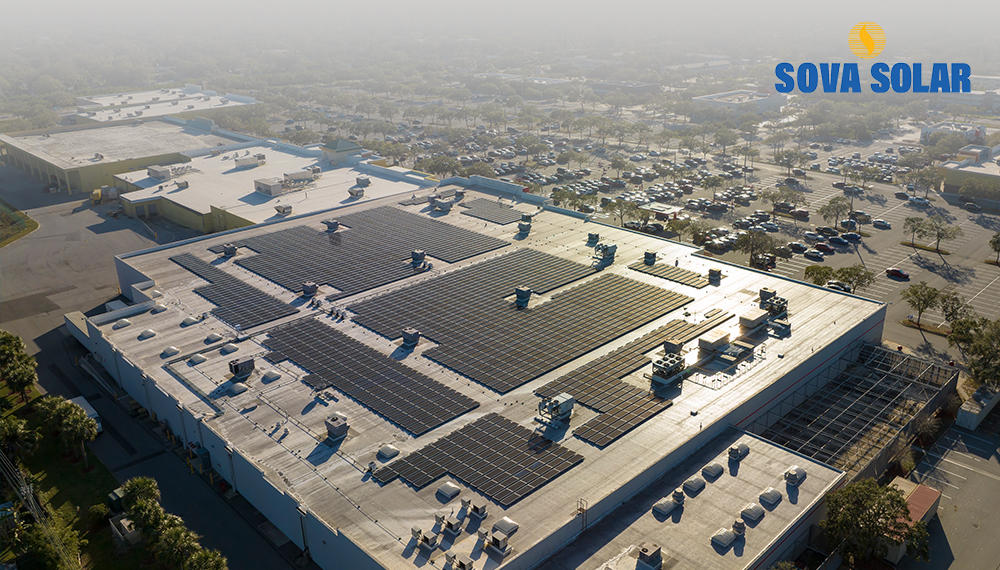
- sovasolar_admin
- May 17, 2025
- Uncategorized
- 0 Comments
A realistic look at opportunity, infrastructure, and investment
The Vision: Solar Manufacturing as India’s Global Growth Engine
As the world accelerates its transition to renewable energy, solar is no longer just a climate solution — it’s a strategic economic opportunity. And India, with its vast potential, is poised to become not just a consumer of solar technology, but a global manufacturing powerhouse.
But can we truly become the world’s solar factory? At Sova Solar, having built high-efficiency solar panels since 2008, we believe the answer is: yes — with the right execution, alignment, and ambition.
Let’s break it down.
The Opportunity: Why the World is Looking to India
1. Global Diversification Post-China Dependency
Most of the world’s solar supply chain — particularly in wafers and cells — is concentrated in China. As countries diversify for geopolitical and supply chain resilience, India emerges as a natural alternative.
2. Government Backing
India’s Production Linked Incentive (PLI) Scheme, customs duty structures, and ‘Make in India’ policies have created an encouraging ecosystem for solar manufacturers. Investments are increasing, and gigawatt-scale factories are on the rise.
3. Growing Domestic Demand
India aims for 500 GW of non-fossil fuel capacity by 2030, with solar at the center. This ensures long-term domestic consumption security for local manufacturers.
The Infrastructure: What’s Working — and What Needs Work
What’s Working:
- Large industrial corridors (like Angul Aluminium Park, where Sova Solar is setting up a 1.2 GW solar cell plant) are now supporting heavy-duty solar facilities.
- Improved logistics and port access for exports
- Emerging component-level clusters (glass, EVA, backsheet) building supply chain resilience
Gaps That Must Be Bridged:
- Lack of upstream integration: India still imports wafers, polysilicon, and ingots at scale.
- Technology gaps: R&D in India must catch up to global Tier-1 standards.
Skilled labor & automation: Advanced manufacturing needs highly skilled talent + automation integration.
The Investment Angle: Is the Capital Coming?
Yes — but selectively.
Major players are committing billions in solar fabs, with government incentives offering capital subsidies. But true competitiveness will depend on:
- Cost per watt parity with global peers
- Technology partnerships for high-efficiency cells (like TOPCon, HJT)
- Vertical integration from polysilicon to modules
At Sova Solar, we’ve seen that success doesn’t just lie in building capacity — it lies in building it strategically.
What India Must Get Right to Lead Globally
1. Build the Full Value Chain
To compete globally, India must go beyond assembly and modules, and create a strong foundation in:
- Ingot & wafer production
- Cell-level innovation
- Local sourcing of raw materials
2. Create Global-Grade Quality Standards
Certifications, traceability, and testing must be world-class. Indian-made panels must inspire trust abroad.
3. Sustainability & ESG Focus
The world is now demanding green manufacturing. Energy-efficient factories, recycling systems, and low-emission processes will set Indian manufacturers apart.
4. Skilling & Technology
We must train the next generation of solar engineers and technicians while embracing automation, AI, and smart manufacturing.
Sova Solar’s Stand: India Can Lead — If We Build Intelligently
At Sova Solar, we believe India doesn’t just need to catch up — we can set the benchmark for integrated, climate-resilient, high-performance solar manufacturing.
Our upcoming 1.2 GW solar cell facility at Angul is a step in that direction — powering progress with precision, purpose, and policy alignment.
Final Thoughts
India is not short on ambition — and the world is ready to look beyond China. But ambition must meet execution, investment, and innovation.
With the right focus, India won’t just power itself — it can power the world.
The sun shines here. Let’s make sure the future does too.
Sova Solar
Empowering India’s Clean Energy Future Since 2008






